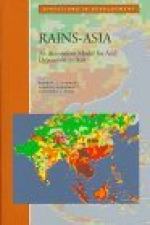|
This section contains 811 words (approx. 3 pages at 300 words per page) |

|
Acid rain is rain with a pH (a logarithmic measurement of acidity or alkalinity) of less than 5.7. Acid rain usually results from elevated levels of nitric and sulfuric acids in air pollution. Acidic pollutants that can lead to acid rain are common by-products from burning fossil fuels (e.g., oil, coal, etc.) and are found in high levels in exhaust from internal combustion engines (e.g., automobile exhaust). Acidic precipitation may also occur in other forms such as snow.
Acid rain occurs when polluted gasses become trapped in clouds. The clouds may drift for hundreds, even thousands, of miles before finally releasing acidic precipitation. Trees, lakes, animals, and even buildings are vulnerable to the slow corrosive effects of acid rain, whose damaging components are emitted by power plants and factories, especially those burning low grades of coal and oil.
Acid rain was first recognized in 1872, approximately...
|
This section contains 811 words (approx. 3 pages at 300 words per page) |

|


